February 13, 2011
Forests
This Northern Screech Owl was found perching on a tree limb after dusk near the edge of Forest Park. They usually grow to no more than 8-10 inches, but like all owls, it is an able hunter. It sometimes eats other birds such as starlings, but its diet is widely varied, from chipmunks to flying insects to salamanders.
Fourth and fifth graders go into the forest to explore. They get down on the forest floor, turn over logs, collect specimens -- it's hands-on discovery. They learn that there's little to fear from the animals, plants and insects they encounter, and that mushrooms and molds might not be beautiful, but they play an indispensable part in the cycles of life in the forest.
A tour of the woods at Forest Park reveals a great diversity in plant and animal makeup. Slope and orientation to the sun, elevation, maturity, destructive pests, soil content, proximity to bodies of water, plus the effects of the surrounding communities and use of the woods by the people who visit the park are some of the factors that affect these habitats.
In the fourth grade and continuing through fifth grade, how these conditions create different wooded habitats and support diverse organisms, the basic concepts of growth and decomposition, the production of food through photosynthesis and the chain of consumers, as well as the interconnections with other habitats are learned through direct experiences.
By getting their hands dirty, the 4th and 5th grade students learn about the interrelationships of organic and inorganic elements in different environments, and about how decomposers, producers and consumers keep the park's habitats in healthy balance.
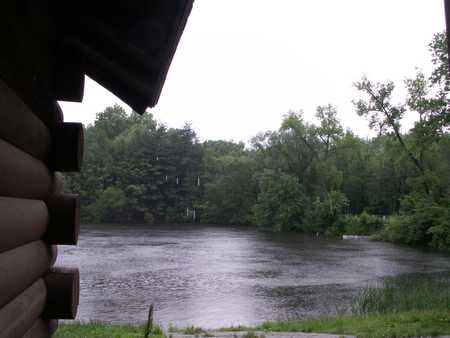
This day in May starts with rain at ECOS.
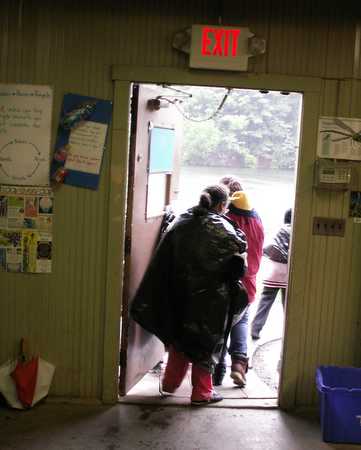
Rain or shine, students at ECOS leave the cabin to experience Forest Park.
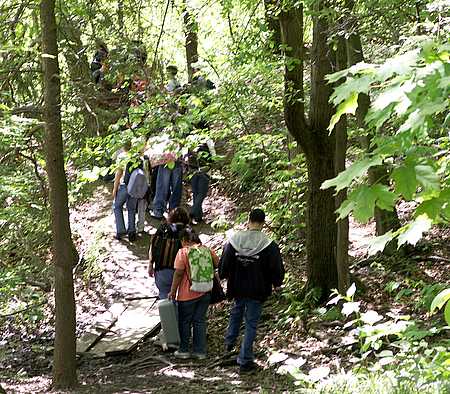
The class begins climbing into the forest.
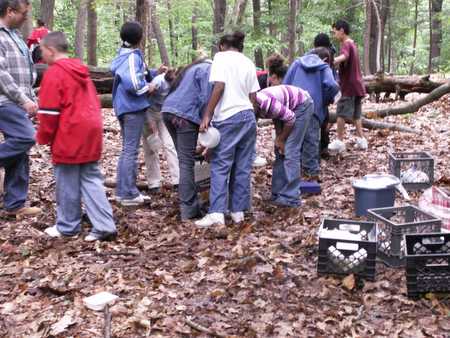
Once in the area they will study, the students take containers to collect organisms in the forest environment, with a focus on consumers and decomposers. Decomposers work constantly to turn dead leaves, trees and other organic matter into soil to replace what is lost to erosion and depleted by the living plants that rely on the soil�s nutrients.
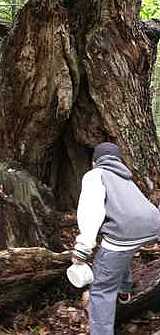
Inside a rotting tree trunk there are many decomposers at work.
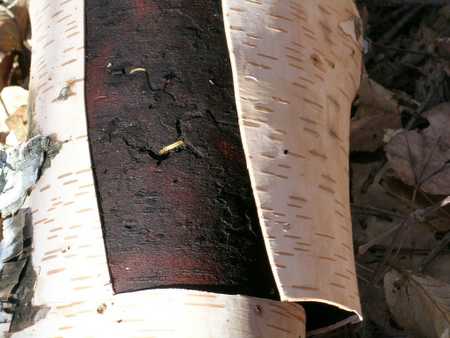
Termites, beetles and insect larvae are some of the favorite foods of all species of woodpecker in the park. Removing the bark from this dead White Birch branch shows what woodpeckers listen for as they move up and down a tree.
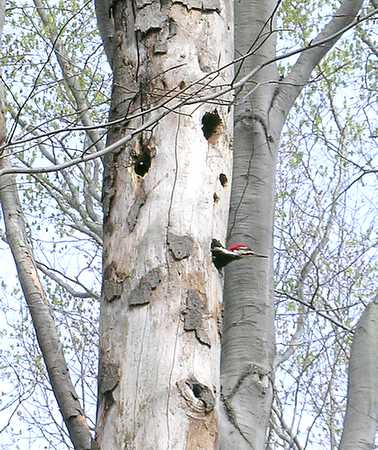
The Pileated Woodpecker is the largest woodpecker in Forest Park. It is also the loudest -- the hammering sound it makes can often be heard ringing through the woods. Here it is building a nest in dead pine tree.
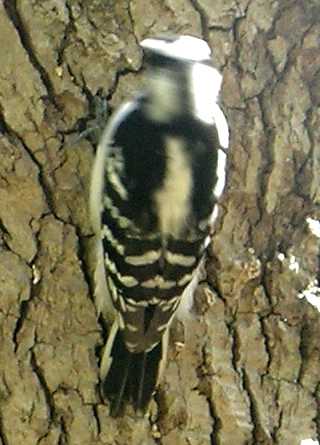
A Hairy Woodpecker searches for food.
The Northern Flicker is a member of the woodpecker family, though it often feeds on insects on the forest floor. This is a male -- females lack the black "mustache." The flicker is migratory, flying south of New England in the coldest winter months, between November and March.
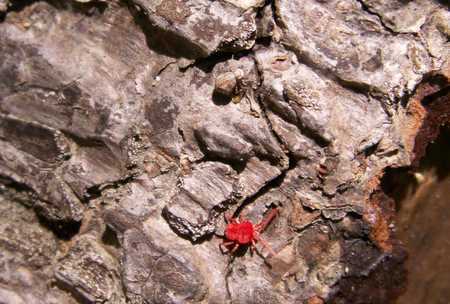
A close look at the trees and the floor of the forest will reveal many extremely small creatures. This red mite and a camouflaged spider, greatly enlarged in this photo, are good examples.
Sow Bugs, about 1/2 inch long, are found under rocks, logs and stones and in other damp, dark places. The Sow Bug is not an insect or arachnid, but a crustacean adapted to living solely on land. It eats decaying plant matter.
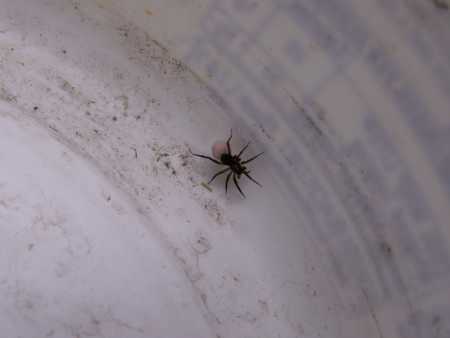
Wolf spiders roam all the habitats of forest park save the water. This one is carrying an egg sack.
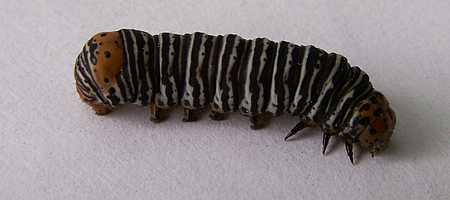
Some caterpillars feed on the leaves of the particular tree a butterfly or moth laid its eggs on, or may move around. They are often food for birds and small carnivores. This specimen displays confusing coloring -- it appears to have a head at both ends.
This caterpillar was found by a student at the edge of the woods near a lilly pond.
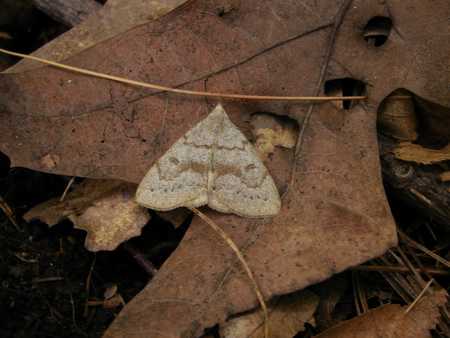
Many moths live exclusively within the forest. Coloring often matches their environment.
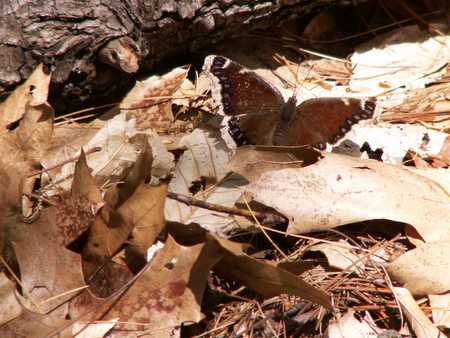
Many butterflies that inhabit the forest are also colored to fit into their environment in order to escape predation by birds and other insect eaters. This butterfly is called a Mourning Cloak. Its preferred food is tree sap, especially that of the oak tree.
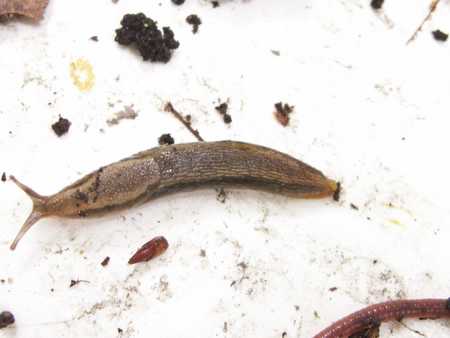
Slugs like this one leave silvery trails behind on the leaves they travel over in search of food.
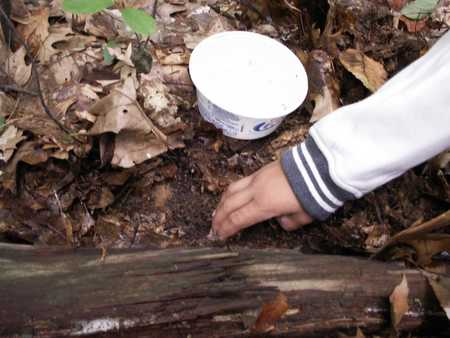
Finding organisms that decompose matter on the floor of the forest often requires turning over logs under which they live or hide during the daylight hours.
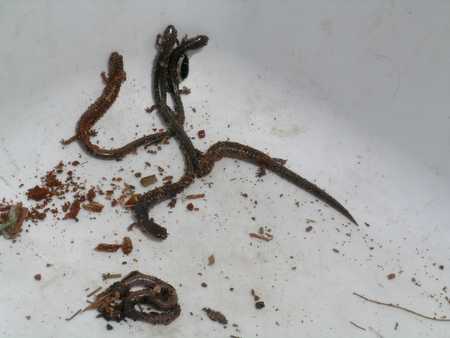
The Eastern Red-Backed Salamander lives under logs in the forest during the day, and differ from the Dusky Salamander by having three toes, instead of four. Some Earthworms, often found alongside the salamanders under logs, are in the foreground.
Close-up of the Eastern Red-Backed Salamander.
The Red Spotted Newt, a common salamander in North America, is not found in Forest Park, but lives nearby. This one was found on a hike up Mount Tom, roaming around the forest floor in daylight (unlike the nocturnal Eastern Red-Backed Salamander). Eastern newts have three stages of life: the aquatic larva or tadpole stage; the red eft or terrestrial juvenile stage; and the aquatic adult. The larva possesses gills and does not leave the pond environment where it was hatched. Larvae are brown-green in color, and shed their gills when they transform into the terrestrial red eft, seen above. During this stage, the eft may travel far, from one pond to another. After two or three years, the eft finds a pond and transform into the aquatic adult. Eastern newts live in the forest; they need a moist environment with either a temporary or permanent body of water. Eastern newts have some of toxins in their skin, and their coloring may serve as a warning to predators. It eats a variety of foods such as insects, small mollusks and crustaceans, young amphibians and frog eggs.
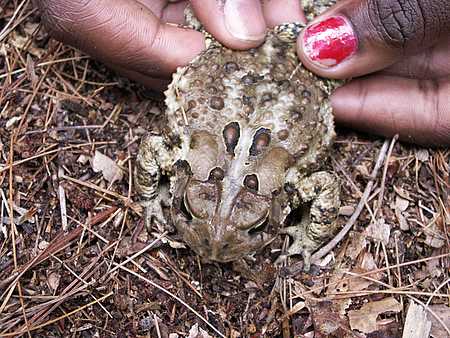
Holding it the proper way -- by its hind legs -- students display a large toad. The life cycle of the toad includes all three major habitats; the pond, where it is born; and the field and forest, where it roams in search of food.
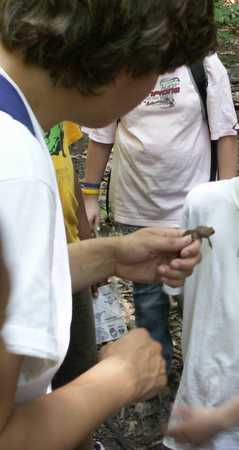
Ms. Orellena holds a toad out for the students to feel its dry, bumpy skin.
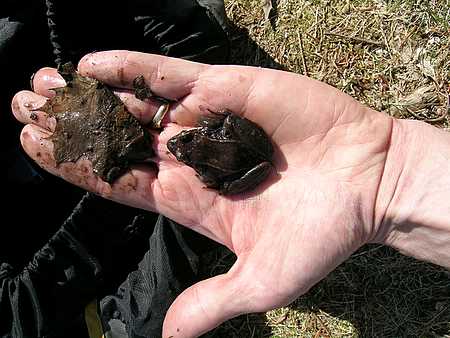
Wood Frogs live in the leaves on the forest floor. They range from light red to dark brown.
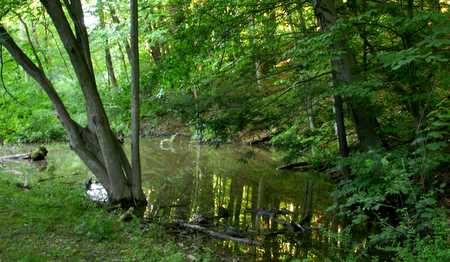
Wood Frogs breed in vernal ponds, which are bodies of water formed by snowmelt and spring rains, often drying up by midsummer.
Most animals that live in vernal ponds stay when the water dries up, burying deep into the soil until the water returns. Their reproduction and development has to be fast or else they wouldn't survive in the vernal pond habitat.
The vernal pond, which dried up in August.
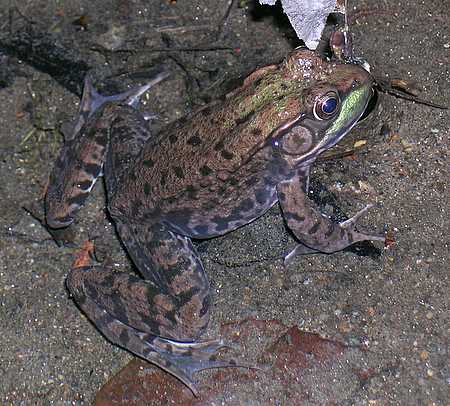
Frogs, like this Green Frog, are often found in vernal ponds.
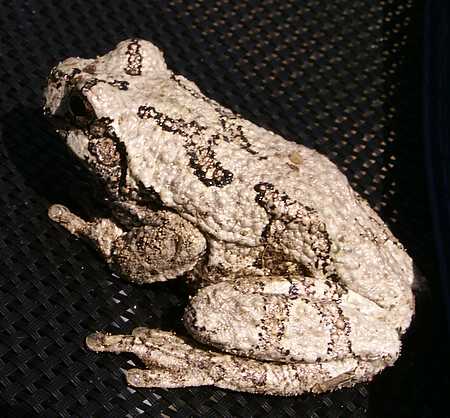
The Grey Tree Frog, which is rarely seen during the day, has suction pads on its toes. It can change its color from grey to green or brown to match its surroundings. It makes a fluttery, musical trilling sound at night.
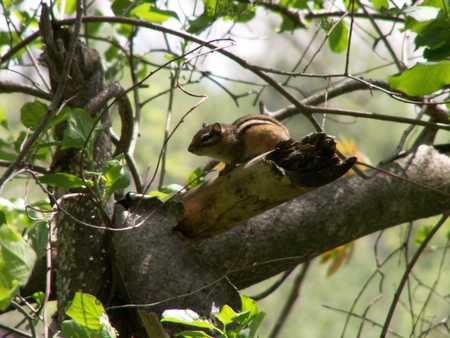
The Chipmunk lives in the forest or around its edges in underground burrows.
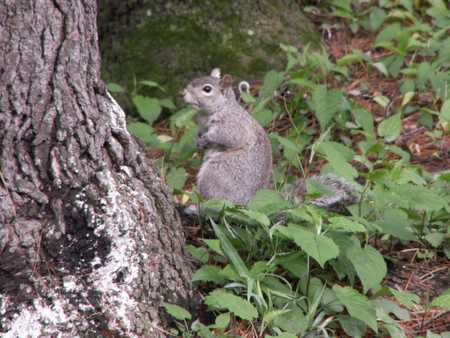
The Chipmunk's rodent cousin the Grey Squirrel is a great distributor of seeds, burying them in the ground during fall to store food for winter and early spring. In the warm months the squirrel lives in tree nests. During the colder months it lives in more protected areas, such as the hollow of a log.
The Little Brown Bat, like this one that was found inside the ECOS cabin, feeds on insects such as moths, beetles, mosquitoes, and flies. A single Little Brown Bat can catch 600 mosquitoes in just one hour. Bats rest in roosts - often trees, or in crevices where they form tight clusters. During the summer months, the bats consume about half their weight in insects each night. The bat is the only mammal that can truly fly (like a bird).
During a trip to the woods with his class, Mr. Freedman, who found the Little Brown Bat in his classroom, released it by letting it attach itself to a tree. It used its claws to climb up the tree until it was out of sight in the upper branches. Bats are nocturnal, so it was climbing to finding itself a safe place to sleep until nightfall.
The Catbird lives on the edge of the forest and in dense shrubs. It is able to mimic other birds, but it gets its name from its call, which sounds like a cat meeowing.
The Northern Mockingbird most often nests near the tops of trees or in dense thickets, sometimes in suburban or urban areas. It is a year-round resident, though may fly south to escape harsh winters. It forages on the ground or in vegetation, eating mainly insects, berries and seeds. It aggressively defends its nest and the surrounding area against other birds and animals, including humans.
This Red-Tailed Hawk has its eye on its prey, which can include squirrels, chipmunks, smaller birds, snakes and other small animals. It hunts in both fields and forests, and is at the top of the food chain in both habitats.
The speckled brown and white feathers on this Red-Tailed Hawk indicate that it is immature. It was seen hunting near Fountain Lake.
The speckled feathers on this hawk also indicate it is immature, though it is not a Red-Tailed Hawk, but a much less commonly seen Cooper's Hawk. It feeds on birds, which it hunts primarily in the forest, though it sometimes hunts quail and poultry.
The Red-Shouldered Hawk favors woodlands near water. This one was part of a pair that built a nest near Fountain Lake in Forest Park this spring. Red-shouldered Hawks eat small mammals, the largest being rabbits and squirrels; it also consumes reptiles and amphibians, such as snakes, toads, frogs, plus small birds and large insects.
One of the Red-Shouldered Hawks' offspring.
Wild Turkeys were successfully reintroduced recently into Southern and Central New England after the regrowth of broadleaf forests restored their habitat. Many now live in Forest Park and venture out into the surrounding towns in search of food.
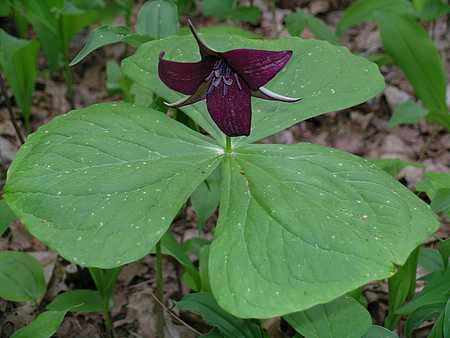
Many wildflowers only grow in the shade of the forest, but bloom early to catch the sunlight before the trees leaf out. And like this Purple Trillium, their growing period can be very short.
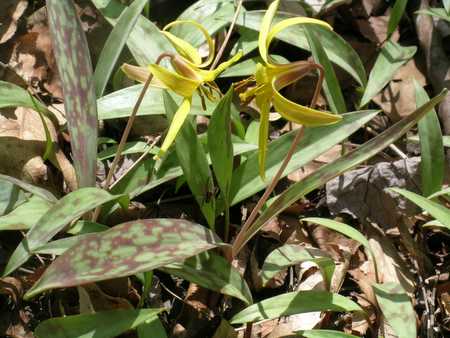
The Trout Lilly blooms from April through May in the park, then dries up and decomposes. It grows in the forest and on its edges where it is wet. It is named for the spots on its leaves.
The Eastern Starflower blooms in moist woods from May to June.
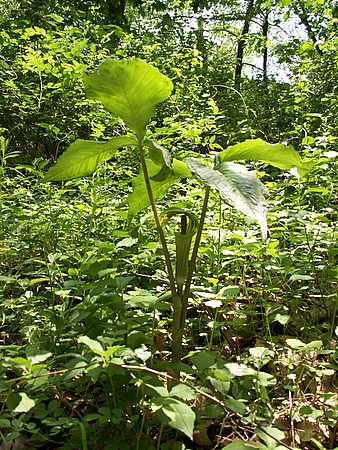
The Jack-in-the-Pulpit ranges from the deep forest to its edges.

Closeup of the Jack-in-the-Pulpit's flower.
Closeup of the berries the Jack-in-the-Pulpit produces in near the end of summer.
Bunchberry blooms in the woods in early to late spring.
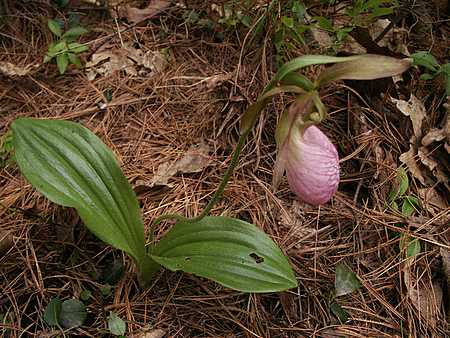
The Pink Lady's Slipper, one of relatively few North American orchids in New England, is becoming scarce in Forest Park because people dig it up to plant in their gardens. It does not transplant, however. The plant is very sensitive to soil and light conditions.
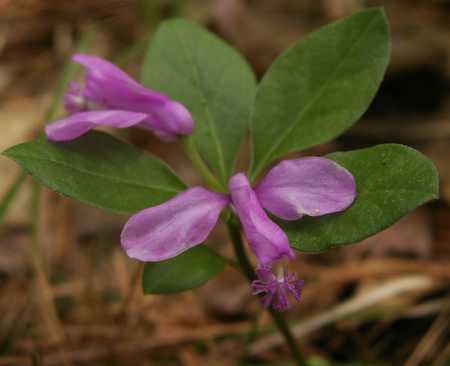
This Fringed Polygala, also called "Gaywings," is an small orchid-like plant that blooms May to June.

A Wild Geranium, which blooms in spring in wooded and shady areas across Forest Park.
A Maple-Leaf Viburnum budding in early spring.
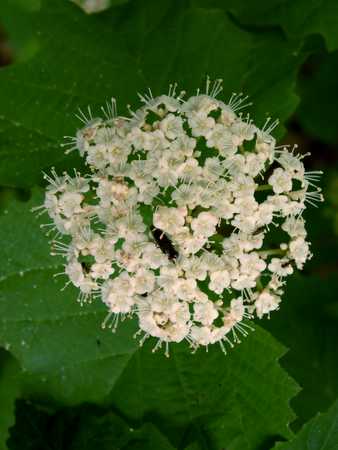
The Maple-Leaf Viburnum blooms from May to July.
The Maple-Leaf Viburnum then produces berries beginning in August.
Orange Jewelweed is sometimes called "Spotted Touch-Me-Not" because the seed capsules the flower produces burst when touched.
The Rosebay Rhododendron prefers moist woods or streamsides. It is a large, evergreen shrub that blooms June through July.
Spotted Wintergreen blooms June through July.
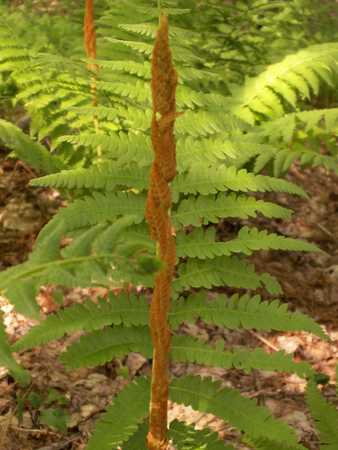
The Cinnamon Fern is named for the 4 foot cinnamon-colored stalk growing among its fronds. Ferns are among the oldest families of plants still alive. In New England, most grow in woodland habitats.
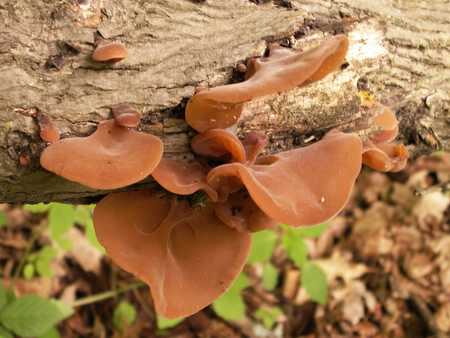
Mushrooms, mosses, lichens and molds play a large role in the decomposition of organic material in the forest.
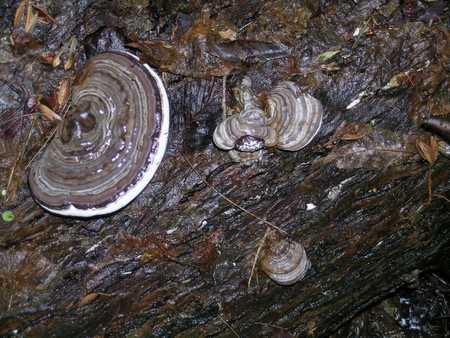
This bracket fungus, which prefers to grow on living or dead broadleaf trees, is named Artist's Fungus.
This fungus is called a Pinecone Mushroom.
Indian Pipe, which grows in shady woods and around its edges, gets its food from dead organic matter.
Beechdrops is a parasitic plant that, as its name suggests, can be found under beech trees, where it feeds on the tree's roots.
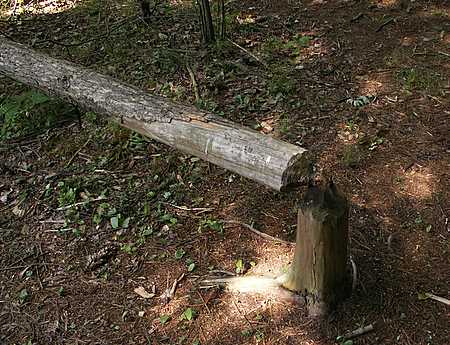
The Beaver, a member of the rodent family, has been multiplying in Forest Park. Evidence of their work at felling trees and chewing bark can be seen widely in the areas around the dams.
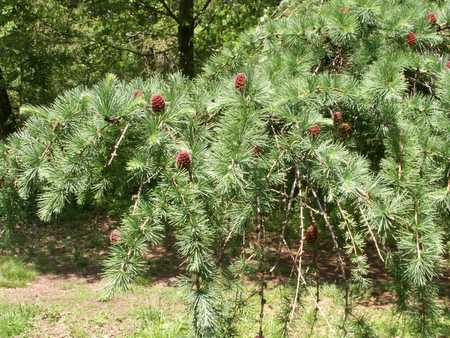
The European Larch tree, seen in late April, is a conifer which loses its needles in the winter. The cones of the larch are a bright red in early spring. Its American relative, the Tamarack, prefers wetland habitats. In Forest Park, the European Larch is one of many specimen trees that were planted, some marked with plaques for identification -- a reminder that the actions of people are an integral part of the forest ecosystem.

A close-up of the European Larch pinecone in early spring. Later, they turn brown.
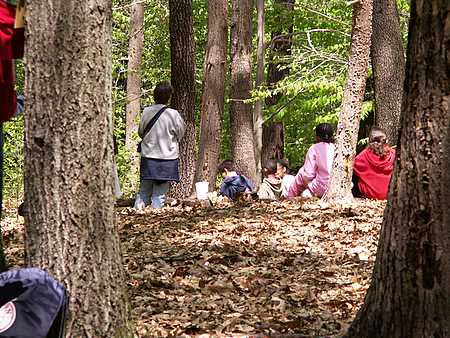
The students quietly study the trees around them, describing in their journals the type of trees in their vicinity, the presence of fungi, lichens and mosses, as well as nests, animals and many insects.
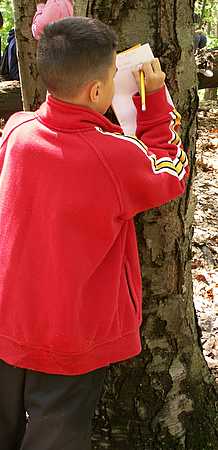
Examining the bark of one tree, a student notes the design and texture of the bark.
Mr. Haley's class collected plants, rocks, insects and earth to bring back to class to study under microcsopes and record their observations about each.
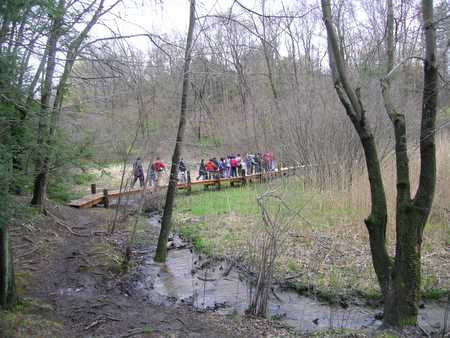
Crossing a marsh on the south side of Porter Lake to get to and from the forested hills, students often observe footprints of deer, birds, and other animals that come down for water and food. They learn the marsh is a habitat in its own right. Technically, Forest Park is a watershed area, meaning water within the park and from its periphery gathers to form lakes, ponds and streams, which empty into the Connecticut River via the Pecousic River.
Photo by Liam Doran
A female Common Whitetail Dragonfly lands on the marsh bridge, immediately joined by ...
... a male Common Whitetail Dragonfly.
A male Ebony Jewelwing Damselsfly. It lives near woodland streams and rivers.
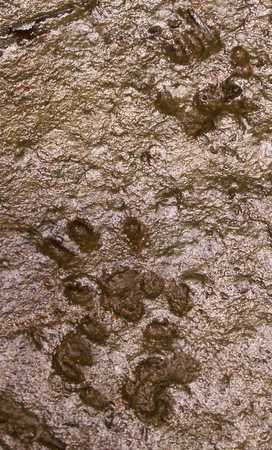
Raccoon prints in the marsh mud.
Aside from the aftermath of major floods, the ability of moving water to create new landscapes is seen dramatically in Forest Park's erosion gullies. Erosion gullies between the many hills in the park connect the forest to the marsh, and the marsh to the pond or lake, a prime example of the interaction of habitats. Nutrient rich soil gets washed down from the forested hills by rain and snowmelt. The streams in the gullies carry it along, depositing some along the way.
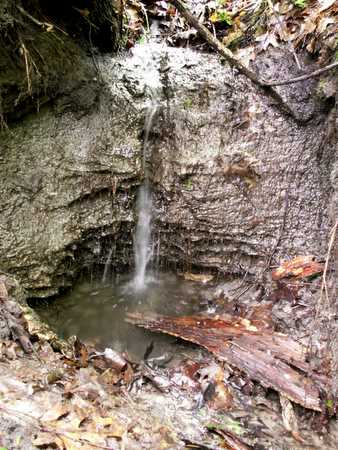
Here the fall of water has stripped away a wall of clay and created a small waterfall and pool. Clay is beneath the relatively shallow layer of topsoil almost everywhere in the lower areas of the park. It is also evident in the lower part of the previous photograph.
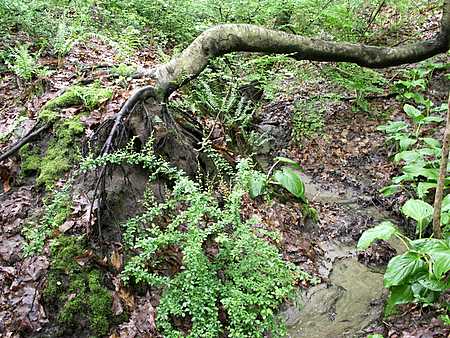 Upstream from the marsh, the soil has been washed away from the roots of this tree. As the process of erosion continues, more and more silt gets deposited in the marsh and beyond, creating ...
Upstream from the marsh, the soil has been washed away from the roots of this tree. As the process of erosion continues, more and more silt gets deposited in the marsh and beyond, creating ...
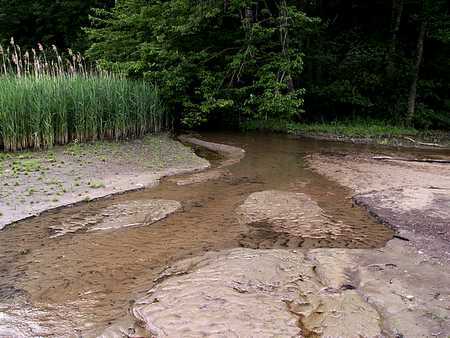
... deltas, which project out into lakes and ponds and begin to support vegetation. The delta will continue to grow unless rising water levels or floods wash them away.
The flower of the skunk cabbage, which grows in late winter. The flower generates enough heat to melt the snow around it. The foul smell, from which the plant gets gets its name, together with the heat, attract the year's first insects -- flies, which like foul smells -- to pollinate it. The leaves, wound tightly in a cone shape, appear soon after the flowers.
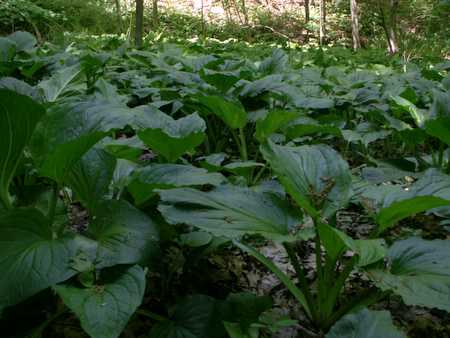
Skunk Cabbage lives only in areas where the soil is wet for some time during the year.
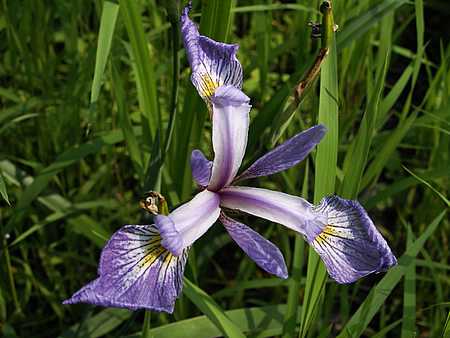
The Blue Flag, a wild iris, is another species of plant that grows only in a marshy habit.
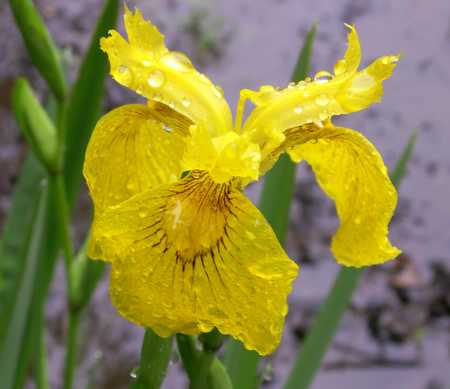
This Yellow Flag is not a native iris like the Blue Flag, but a specimen brought from Europe that escaped from gardens and became an invasive plant. It also grows in marshes and beside bodies of water in Forest Park.
Purple Loosestrife is another invasive plant from Europe. It can be seen blooming in profusion in wetlands from July through September.
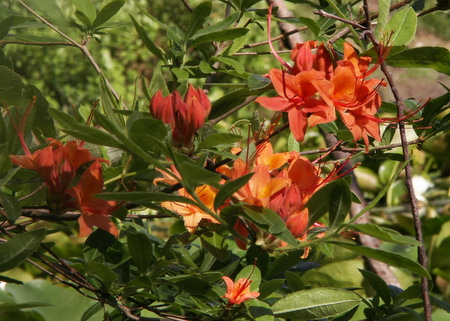
Dusky Salamanders are an example of variation in organisms. Adapted to the wet areas of the forest, it is only found near water. Their markings vary widely from a dull tan with spots to nearly black. They also differ from the forest salamanders in that their hind legs are noticeably larger than their front limbs, they have a moveable lower jaw, and their tails are triangular rather than rounded like the Eastern Red-Backed Salamander's tail.
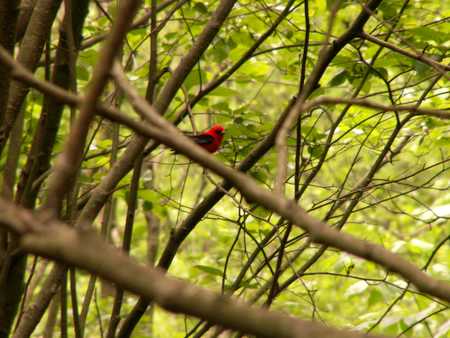
A scarlet tanager comes down from the treetops.
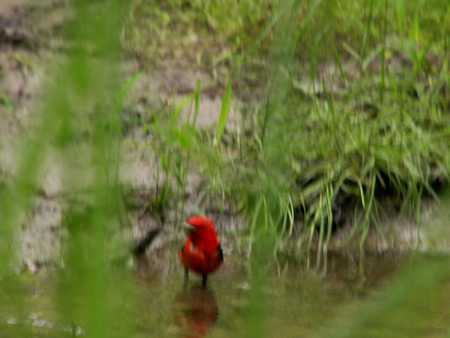
The Scarlet Tanager take a bath in the marsh.
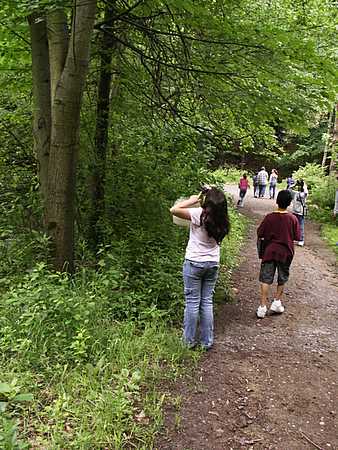
After learning observation skills in the forests, most students want to see more, even when they are on their way back to the cabin for lunch.
Posted by mpdoran at February 13, 2011 1:35 AM